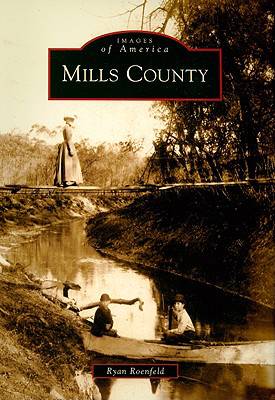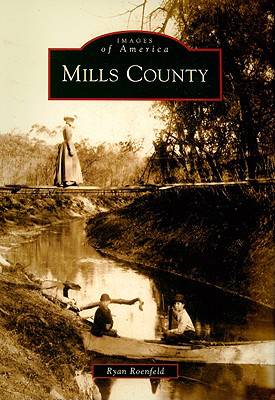
Je cadeautjes zeker op tijd in huis hebben voor de feestdagen? Kom langs in onze winkels en vind het perfecte geschenk!
- Afhalen na 1 uur in een winkel met voorraad
- Gratis thuislevering in België vanaf € 30
- Ruim aanbod met 7 miljoen producten
Je cadeautjes zeker op tijd in huis hebben voor de feestdagen? Kom langs in onze winkels en vind het perfecte geschenk!
- Afhalen na 1 uur in een winkel met voorraad
- Gratis thuislevering in België vanaf € 30
- Ruim aanbod met 7 miljoen producten
Zoeken
Omschrijving
Covering 440 miles, Queen Mills stretches from the Point aux Poules and Five Barrel Islands on the Missouri River east through the loess hills to the West Nishnabotna watershed. Once the center of the Glenwood culture, the area later became the hunting grounds for the Otoes and was then included as part of the Potawatomi Indian reserve. The first Mormon refugees from Nauvoo arrived in 1846, and the California Gold Rush then brought new people west. Mills County was organized in 1851 as Mormon control faded and chaos filled the mud streets of what became Glenwood. Speculation ran rampant as farmers from Ohio, Kentucky, England, and Germany spread across the prairies. New towns and businesses appeared alongside the tracks of the railroads, and the Iowa Institution for Feeble-Minded Children grew into a major institution. One-room schoolhouses dotted the countryside as the county emerged as one of the country's major fruit-growing regions with orchards covering the hills around Glenwood.
Specificaties
Betrokkenen
- Auteur(s):
- Uitgeverij:
Inhoud
- Aantal bladzijden:
- 128
- Taal:
- Engels
- Reeks:
Eigenschappen
- Productcode (EAN):
- 9780738577487
- Verschijningsdatum:
- 22/02/2010
- Uitvoering:
- Paperback
- Formaat:
- Trade paperback (VS)
- Afmetingen:
- 165 mm x 234 mm
- Gewicht:
- 249 g

Alleen bij Standaard Boekhandel
+ 69 punten op je klantenkaart van Standaard Boekhandel
Beoordelingen
We publiceren alleen reviews die voldoen aan de voorwaarden voor reviews. Bekijk onze voorwaarden voor reviews.









